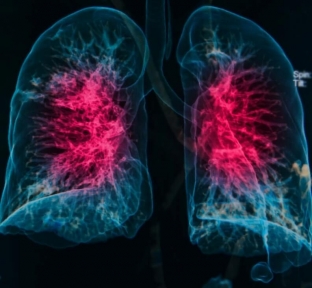Pneumonia – dangerous disease, which is also called pneumonia. The lethal outcome in pneumonia reaches 5%, of which 15-20% are elderly people. It is quite common, but not always on time and clearly diagnosed in patients. The causes of pneumonia are many factors that affect the organs of the respiratory system. Depending on the causative agent of the disease, the methods of treating pneumonia are also chosen. Why this disease develops and how to prevent its occurrence, we will tell today.
What is pneumonia and what causes it
Pneumonia – the main infectious cause of death in children worldwide. This dangerous and unpredictable disease is caused:
- viruses,
- bacteria,
- fungi.
To cope with such a disease is possible due to timely diagnosis and proper treatment. The disease affects the alveoli – thin-walled bubbles, thanks to which the blood is saturated with oxygen.
Causes of pneumonia
The occurrence of pneumonia is influenced by the impact of various pathogens – intracellular parasites, bacteria, fungi and viruses. Moreover, each type of pneumonia has its own characteristics of the course of the disease. The development of the disease can be caused by complications after the transferred:
- flu,
- bronchitis,
- colds.
Often pneumonia is caused by pneumococcus and Haemophilus influenzae. Also, the causative agents of pneumonia can be:
- legionella,
- chlamydia,
- mycoplasma, etc.
The lungs of a healthy person contain a small amount of bacteria. When microorganisms enter the lungs, they are destroyed by the immune system. The development of pneumonia is due to the passivity of the protective functions of the body. Therefore, people whose immunity is weakened, as well as the elderly and children, are most at risk of getting pneumonia.
The penetration of pathogens into the lungs occurs through the respiratory tract.
It is worth remembering that even in the nasopharynx of healthy people there may be some pathogens of pneumonia.
Also, the occurrence of this disease may be associated with the inhalation of air contaminated with pathogens. Pneumonia, which is caused by Haemophilus influenzae, is transmitted from person to person by airborne droplets.
See also: Signs of pneumonia to be aware of

Symptoms and signs of pneumonia
The main symptoms of pneumonia include:
- skin pallor;
- temperature increase to 39-40°;
- appearance of cough, in which purulent sputum is produced;
- weakness, chest pain, shortness of breath;
- heavy night sweats.
When listening to the patient, wheezing in the lungs can be determined. Pneumonia is usually treated on an outpatient basis, but if:
- cardiac and respiratory failure,
- obstructions,
- pleurisy,
The doctor may insist on hospitalization.
Pneumonia is a rapidly progressive disease and, if left untreated, can be fatal.
Pneumonia is divided into:
- segmental, which extends to one or more segments of the lung;
- focal, occupies a small area of the lung;
- lobar, when the disease captures a lobe of the lung;
- total if it extends to all lungs.
Prevention of the causes of pneumonia
It is possible to prevent pneumonia by eliminating contact with the pathogen or by increasing the body's defenses. You can also take a set of measures to prevent the possibility of pneumonia:
- observe the regime of the day and rest, try not to deplete your body,
- keep room ventilated,
- drink well and try not to contact with SARS patients,
- carry out hardening procedures,
- exercise and stop smoking,
- do breathing exercises, etc.
Vaccination annually will help prevent the development of the disease, since pneumonia often occurs as a complication after the flu. It is important not to forget to wash your hands with soap as often as possible, do not neglect the use of vitamins, especially during the cold period. Try to prevent the development of this disease, take care of yourself with estet-portal.com.






Add a comment